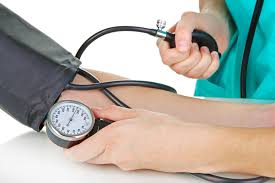
It is 2 AM and you find yourself in a ditch trying to obtain a blood pressure on the driver who is pinned in the vehicle. You are good at getting blood pressures, but with all the noise happening as the tools are working to disentangle your patient from the car you can not hear anything. You remember someone once telling you that when you cannot hear the sounds of the beating through your stethoscope that you can get your numbers by watching the needle bounce. When it starts bouncing you have your systolic and when it stops you have the diastolic. You give it a try and come up with 116/62. Is this accurate?
Obtaining accurate vital signs is a basic skill for pre-hospital care practitioners. Students spend countless hours practicing obtaining pulse and respiratory rates, as well as obtaining manual auscultated and palpated blood pressures. While the generally accepted method of obtaining a manual blood pressure is to listen (auscultate) the sounds of the blood pressure, it is also acceptable to obtain a systolic pressure by means of palpation when it is difficult or impossible to hear. There is another method that some practitioners have used where they watch the bounce of the needle to determine the systolic and diastolic pressures. Systolic is when the bouncing starts and diastolic is when i stops. This method leads to inaccurate blood pressures and should be avoided. In an article published in the International Journal of Exercise Science, this method was compared with auscultation and it was discovered the systolic can be as inaccurate as nearly 15 mmHg. (1) This amount of disparity can be significant especially in the hypotensive patient. In the face of significant noise, palpation will be a far better method of obtaining at least an accurate systolic blood pressure. If a practitioner does elect to watch the needle bounce, it is imperative the pressure obtained be evaluated again using auscultation or palpation to validate the initial readings.
Information on the study can be found at https://www.ncbi.nlm.nih.gov/pmc/articles/PMC6355120/
- Trigg, S. A., Abreu, D., Bitton-Foronda, B., Foley, F. C., & Gibson, A. L. (2019). Comparison of Systolic Blood Pressure Measurements by Auscultation and Visual Manometer Needle Jump. International journal of exercise science, 12(2), 214–220.
